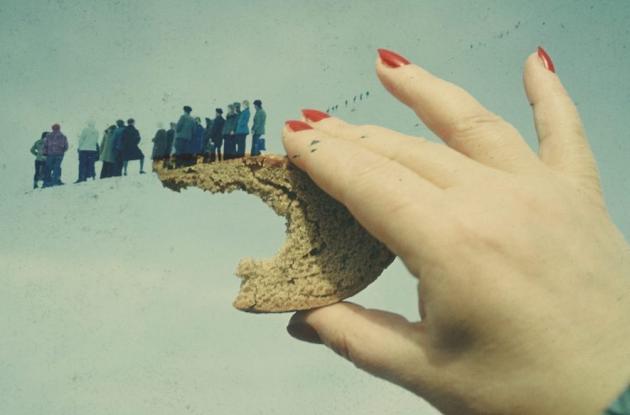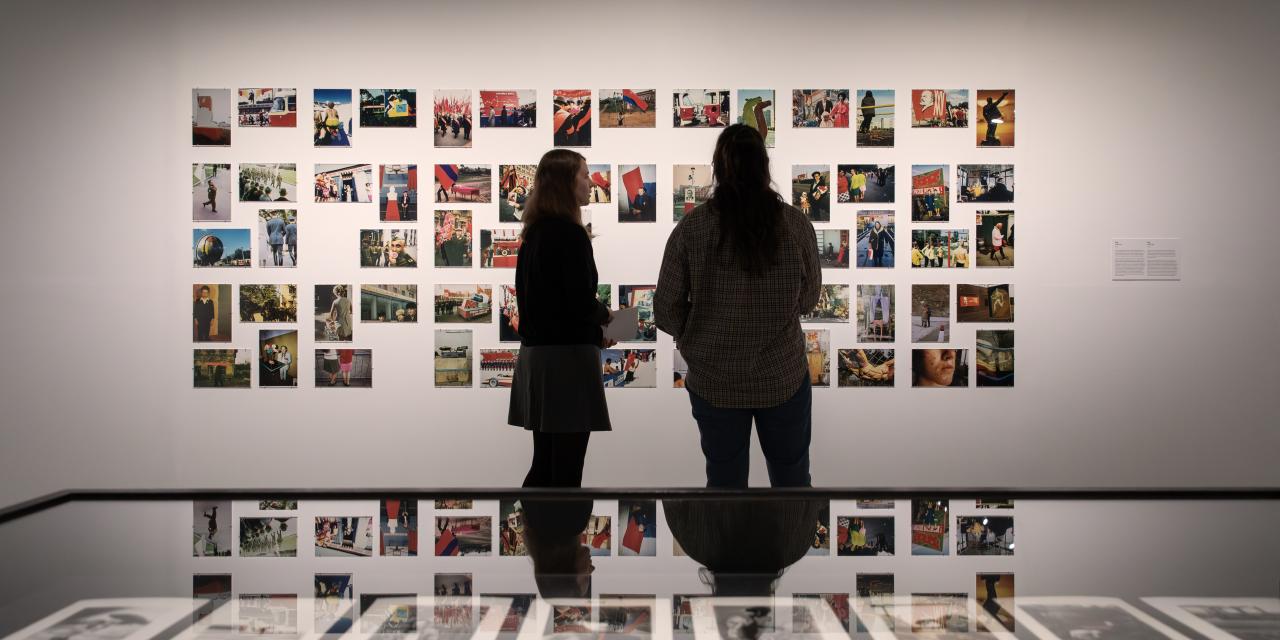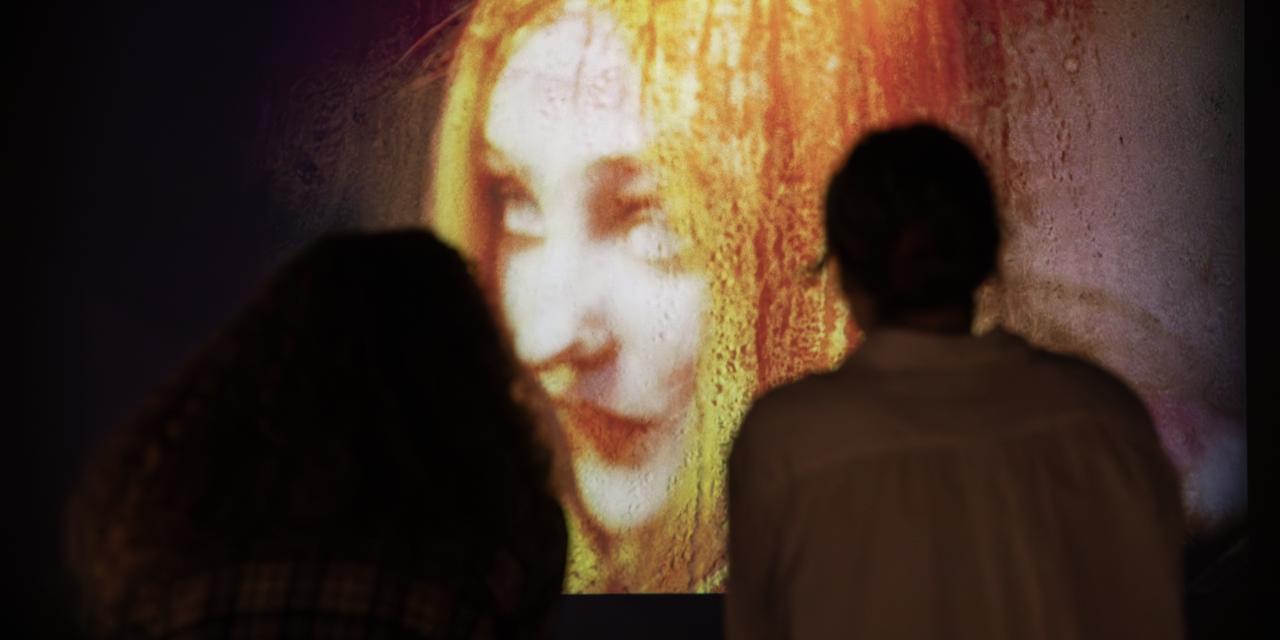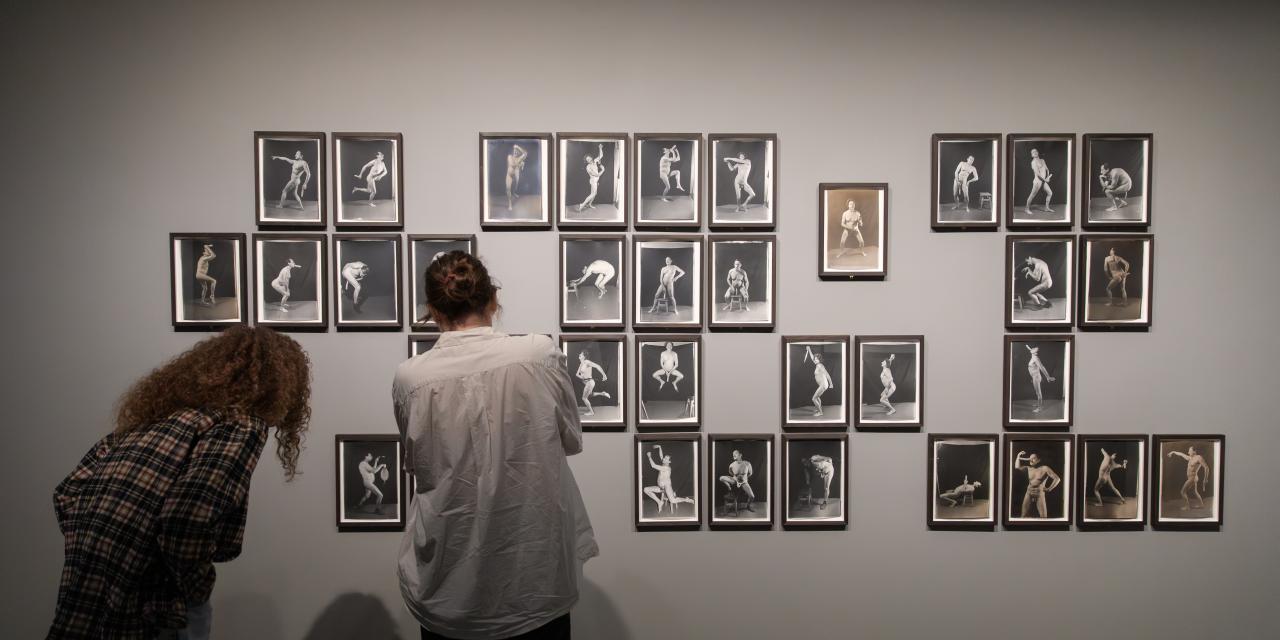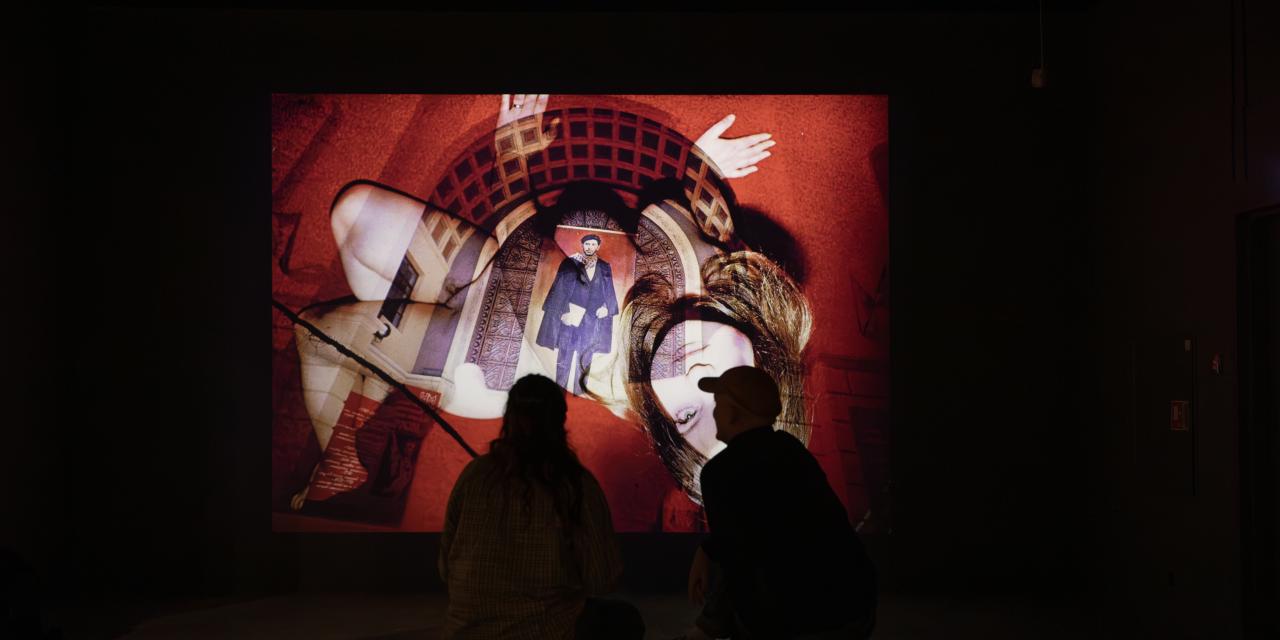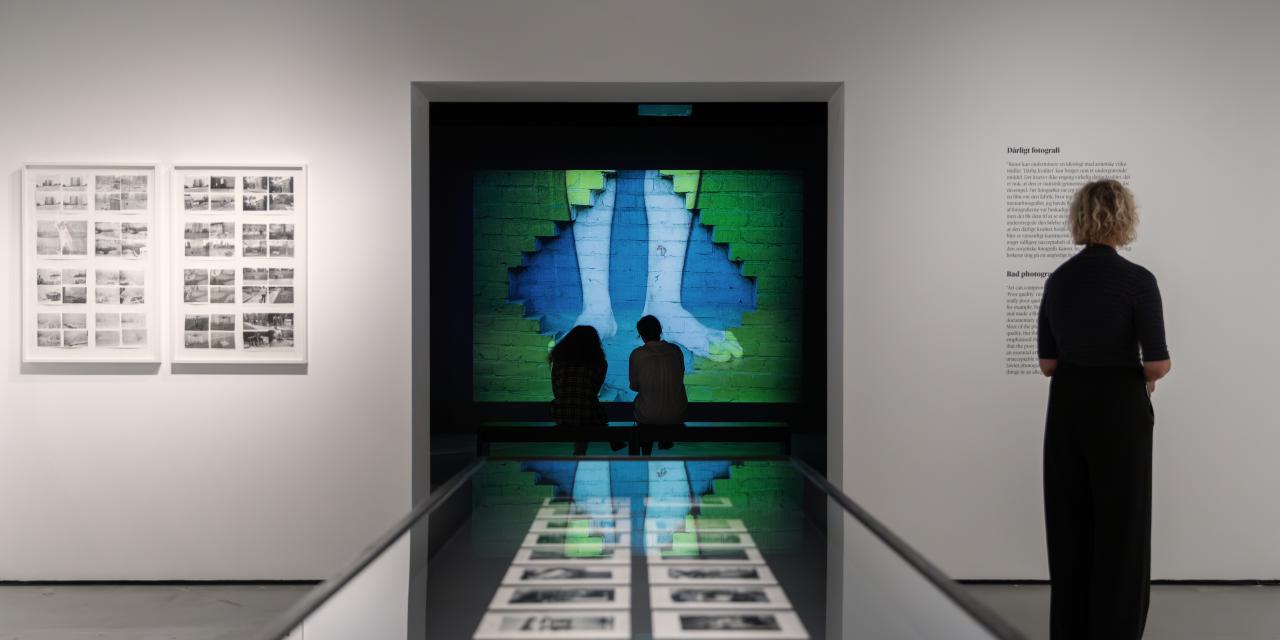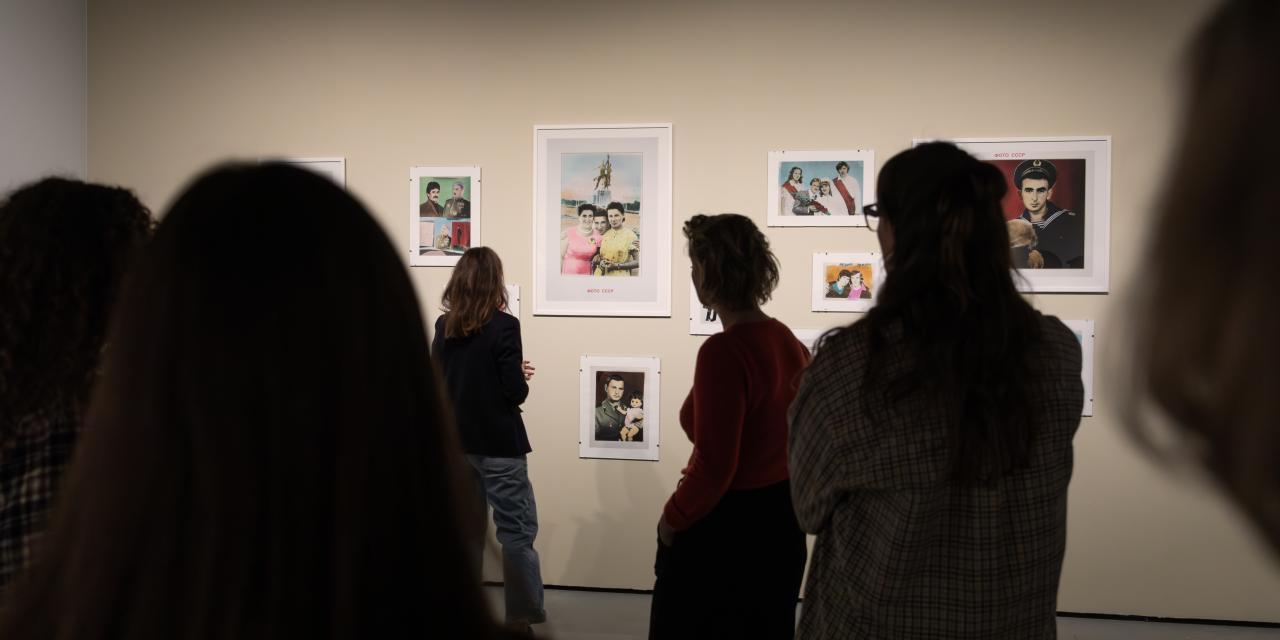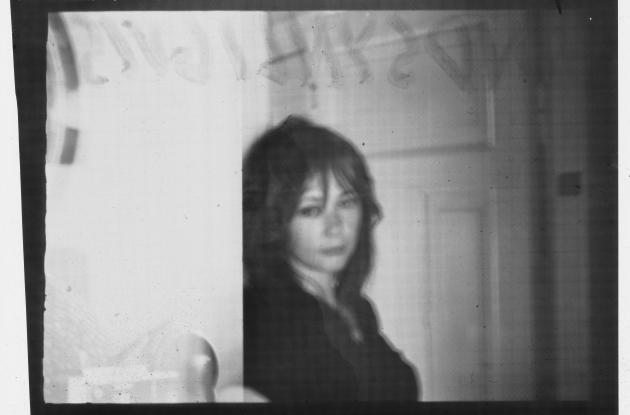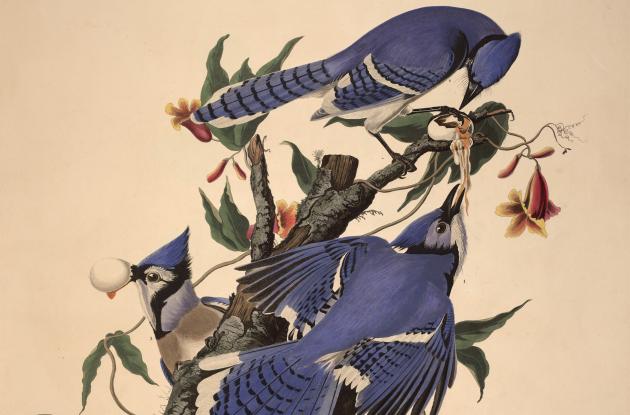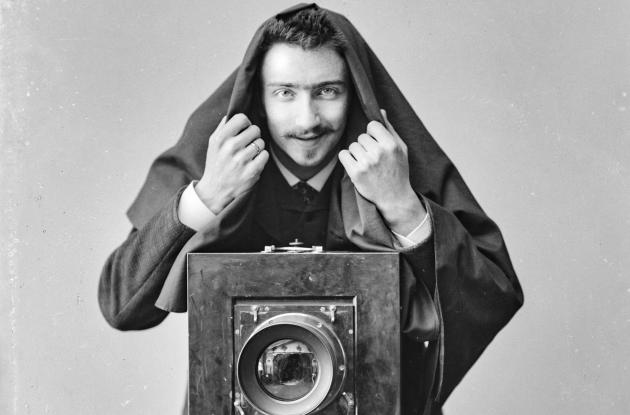UKRAINIAN DIARY – Photography by Boris Mikhailov from 1966 to today
Experience this year's big photo exhibition in The Black Diamond with one of Eastern Europe's most influential photographers.
Review
![]()
![]()
![]()
![]()
![]()
"...a current and poignant exhibition, which can sometimes seem harsh, but which also contains moving photos characterised by great humanism [...] It cannot be ignored!..." - Kulturinformation
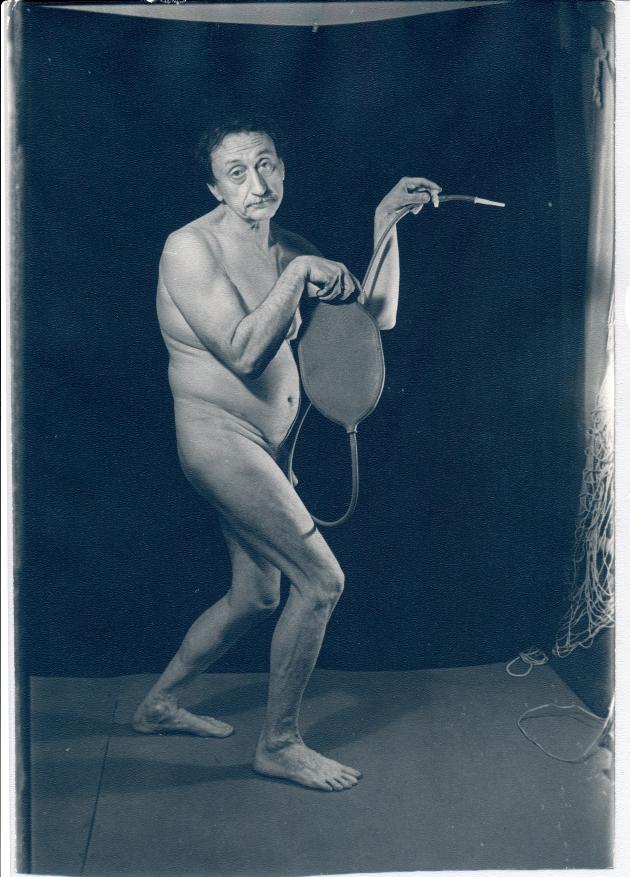
Photo: © Boris Mikhailov, VG Bild-Kunst, Bonn
Ukrainian Boris Mikhailov is one of Eastern Europe's most influential photographers, who has documented life in his homeland for half a century. The result is a poetic, beautiful, harsh, ugly and frightening contemporary look into life before, during and after the collapse of the Soviet Union. Now you can experience his award-winning art in the exhibition Ukrainian Diary in The Black Diamond.
Ukrainian Diary is the first retrospective exhibition of Boris Mikhailov in Denmark. With over 500 works, the exhibition is not just a merciless look into Ukraine's tumultuous history over more than half a century. It also presents an artist's impressive life's work, spanning vastly different artistic methods and aesthetic expressions. He is known for his documentary, conceptual and performative works.
With Russia's war on Ukraine since 2022, Mikhailov's work has taken on a new and urgently important dimension.
From rebel to revolutionary
Boris Mikhailov's photography career began after the KGB fired him from the factory where he worked as an engineer in the 1960s. Here he had secretly used the state-owned factory's camera and darkroom to take and develop nude photos of his then wife. A motive that in Soviet-ruled Ukraine was deeply illegal.
Now unemployed, he devoted himself to photography full time. A risky venture, as under the communist rule you were only allowed to take "authorised" photos that confirmed the Soviet regime's glossy image of society. The police kept Mikhailov under constant surveillance and routinely destroyed his cameras and rolls of film.
In order to circumvent the communist government's censorship as far as possible, Mikhailov developed some very special and very different aesthetic tools, for example the photographic technique "bad photography", where he deliberately made 'mistakes' in his art. In this way he was often able to circumvent the censorship, for what meaning can a photograph of poor quality have?
“Poor quality can be used as an undermining agent. It doesn't even require really bad quality, it's enough that it's statistically average - bad printing, for example. By adding something previously unacceptable to the photograph, I violated the canon of Soviet photography. I photographed allegedly wrong things in an allegedly wrong way,” explains Boris Mikhailov.
Mikhailov and his friends also began to secretly organise small anti-system exhibitions in their homes, so-called "dissident kitchens". This group of photographers later formed the nucleus of the Kharkiv School of Photography – one of the most influential artistic movements of the Soviet era, known for its experimental approach to photography and its often provocative and conceptual style.
Concept art, hand-coloured photography, social documentary, performance and film
Mikhailov's work is a multifaceted artistry. Not only in the choice of material and method, but also in the choice of motif. His works range from humour to tragedy, from social realism to the pop; from documentation of the total poverty and destitution that prevailed in Ukraine under the Soviet Union to almost burlesque nude pictures of the artist himself. From beautiful, aesthetically glorified portraits in the Luriki series to the harsh, ugly and uncomfortable Case History series – a portrayal of Kharkiv's desperate residents lost in Ukraine's economic collapse in the slipstream of the dissolution of the Soviet Union.
Boris Mikhailov works in series because, as he states: “ The idea that a single image can contain maximum information is a lie; I don't believe in absolute truth. When you explore something from many different angles, your sense of truth increases."
The series are very different in method, motif and expression. What they have in common is that they document and interpret several decades of harsh social realities and absurdities in a Soviet and post-Soviet Ukraine.
Boris Mikhailov series
National Hero, 1991 (single work)
Immediately after the fall of the Soviet Union in 1991, Mikhailov created a series of portraits, including this image: A reworked, hand-coloured self-portrait of an 18-year-old Mikhailov in an apparently traditional Soviet military uniform - taken during Mikhailov's very short time in the military.

Photo: From the series "National Hero", 1991 Chromogenic print, 120 x 81cm © Boris Mikhailov, VG Bild-Kunst, Bonn. Courtesy Galerie Suzanne Tarasiève, Paris.
This aesthetic image of a man with red lips, clear blue eyes and delicate, porcelain-like skin looks innocent at first. But making the man handsome, tending to the feminine, and placing him on a pink background was a completely unheard of representation of masculinity in a Soviet context. At the same time, the insignia on the Soviet military uniform have been replaced by traditional Ukrainian embroidery – a detail that clearly points to the upheaval brought about by the dissolution of the Soviet Union.
“I thought that a new country needed a new national hero, and I made a series of self-portraits in which I was dressed in uniforms decorated with Ukrainian ornamentation, as if I were developing new state symbols, but I also painted over the images [… ], as a retrospective of the Soviet censorship. It was a way of making fun of Soviet propaganda's beautification of banal situations.” (Boris Mikhailov).
Yesterday's Sandwich, 1966-1968
As a self-taught photographer, Boris Mikhailov casually threw a pile of slides on his bed and "two slides accidentally fused together, like a sandwich," he says. Mikhailov suddenly saw a completely new metaphorical picture and he began to explore contradictory combinations in what he calls "programmed randomness".
In the Yesterday's Sandwich series, Mikhailov has created surreal and highly poetic images that fuse beauty with the grotesque. The series introduces otherwise forbidden narratives that stand in stark contrast to the state-controlled, idealised portrayal of Soviet life.
In the exhibition, the slide show Yesterday's Sandwich is shown with Pink Floyd's album The Dark Side of the Moon – a musical backdrop that, for Mikhailov, underlines "the lost paradise" in the theme.
At Dusk, 1993
Shortly after the collapse of the Soviet Union, Mikhailov wandered the streets of Kharkiv with a hip-height panoramic camera. Here he took pictures of the many poor figures in the shadows, queuing for food or lying on the street. He then tinted the prints cobalt blue – a melancholic colour which, like the title 'in the twilight', symbolises the transition from day to night; from a Soviet to an independent Ukraine.
The melancholic blue colour is also linked to traumatic memories from Mikhailov's childhood. During World War II, his father enlisted in the Red Army, while his Jewish mother fled with three-year-old Boris to Kirov in a freight car on one of the last trains out of Kharkiv, just before the Nazis took the city.
Mikhailov remembers the bombardments, the wail of sirens and the floodlights in the dark blue sky: "For me, blue is the colour of blockade, hunger and war... Blue, blue, light blue..."

About Boris Mikhailov
Boris Mikhailov's uncompromising and merciless visual language has made him one of the most important artists in contemporary photography. He has influenced generations with his critique of Soviet society and raw exposition of themes such as everyday life, sexuality, the body, despair, poverty and mortality. In 1971, Mikhailov co-founded the Vremya group, an underground art collective that explored experimental forms of photographic techniques and methods, which later formed the basis of the Kharkiv School of Photography. He becomes head of the photography department of Panorama, the Ukrainian Association for Experimental Photography, a position he holds from 1987 to 1991. In 1993, he spends a year in Berlin funded by the German Academic Exchange Organization (DAAD). He became visiting professor at Harvard University in 2000 and professor at the Leipzig Academy in 2002-2003.
Mikhailov has received many prestigious awards, including the Albert Renger-Patzsch Prize (1997), the Goslarer Kaiserring Award (2015), the Deutsche Börse Photography Foundation Prize (2000) and the Hasselblad Foundation International Award in Photography (2000). In 2021, his slideshow installation Temptation of Death (2017-2019) was awarded the Shevchenko National Prize, the first official recognition of Mikhailov's work in Ukraine.
Mikhailov's work has been shown around the world in numerous solo exhibitions at institutions including The Ukrainian Pavilion at the Venice Biennale, (2007), Tate Modern, London (2010), MoMA, New York (2011), Berlinische Galerie, Berling (2012) , Sprengel Museum, Hannover (2013), PinchukArtCentre, Kyiv (2019), Staatliche Kunsthalle, Baden-Baden (2020), Maison Européenne de la Photographie, Paris, (2023) Palazzo Esposizioni, Rome (2023) and Fotomuseum The Hague, The Hague (2024).
Boris Mikhailov lives and works with his wife Vita in Kharkiv and Berlin.
Events
Photo Talk: Katja Petrowskaja (UA) on Boris Mikhailov
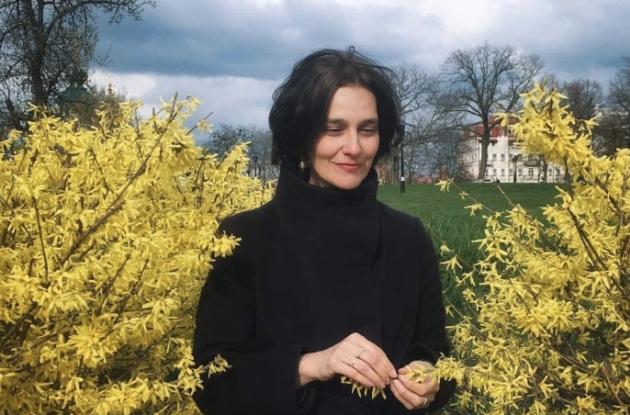
Thanks to
The exhibition is supported by Handelsgartner Harry Opstrups Fond and Politiken-Fonden.
The Exhibition is organised in collaboration with MEP – Maison Européenne de la Photographie, Paris.
Curator: Laurie Hurwitz in collaboration with Boris and Vita Mikhailov
Curator for Royal Danish Library: Charlotte Praestegaard Schwartz
